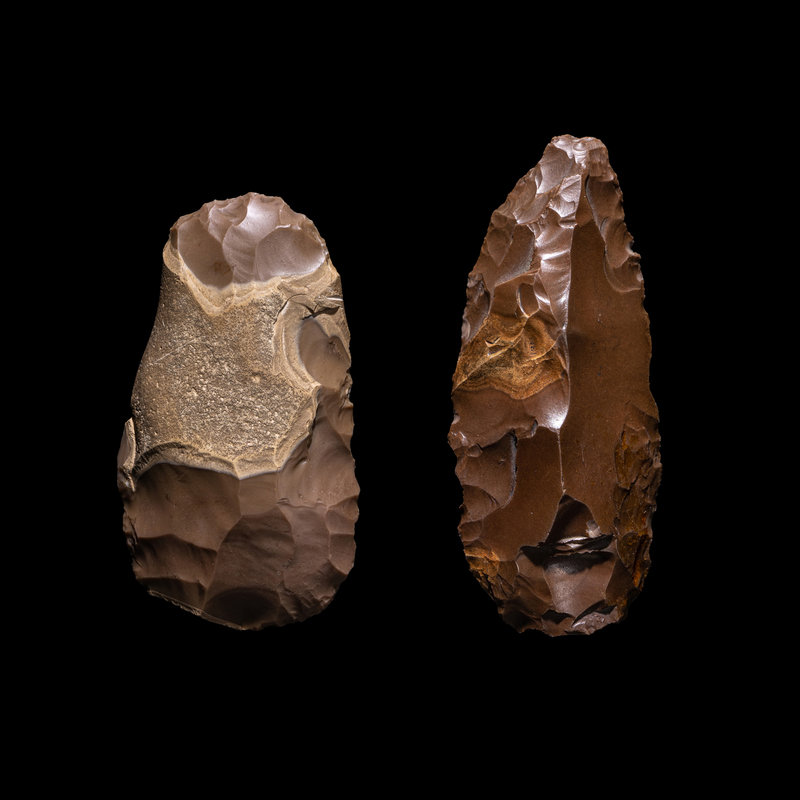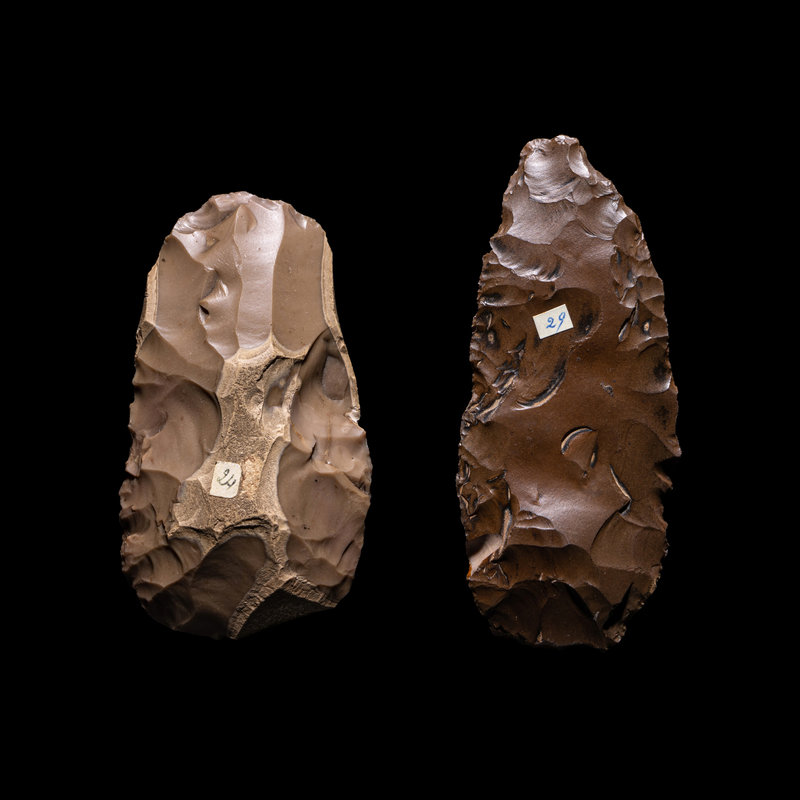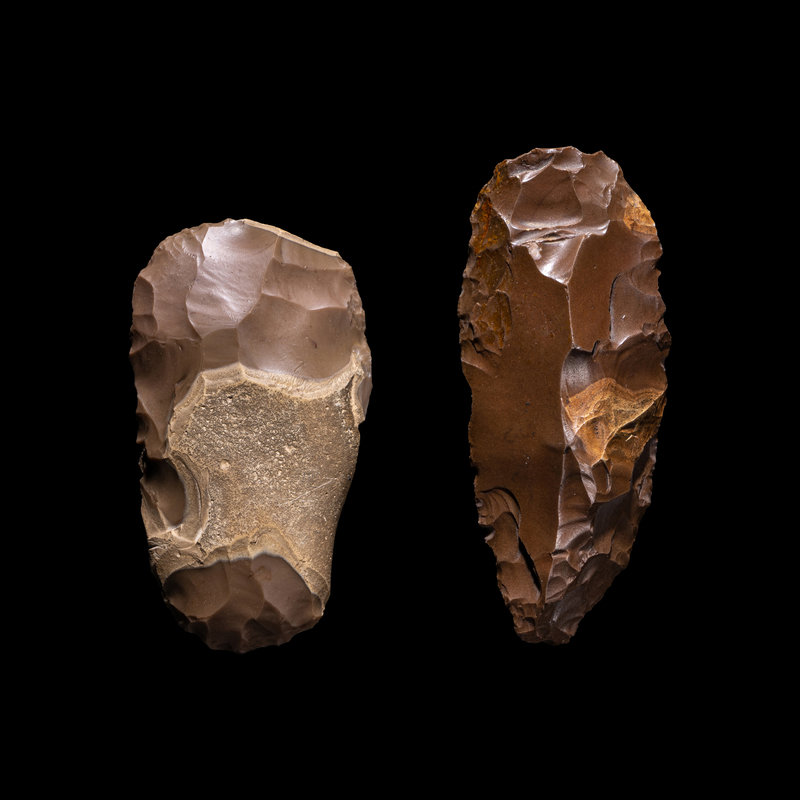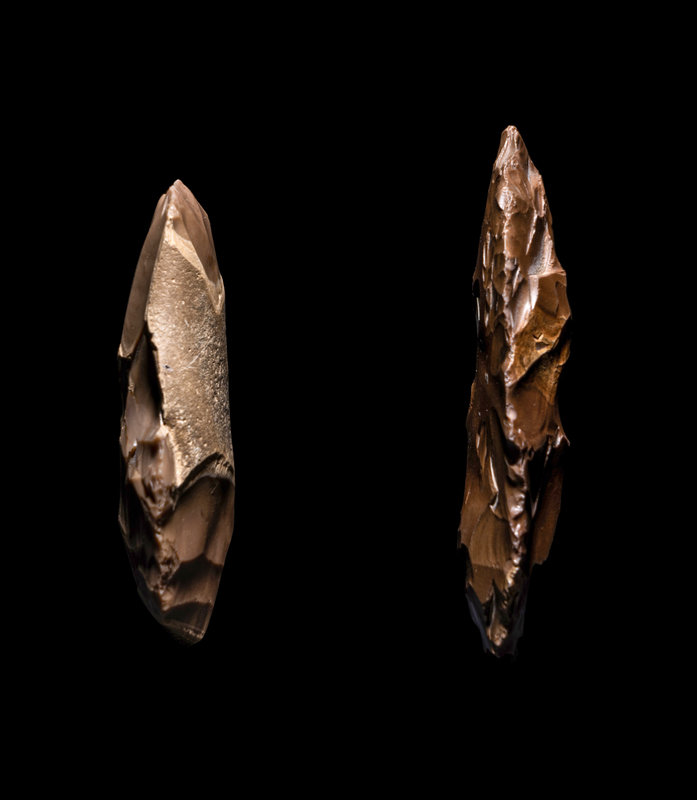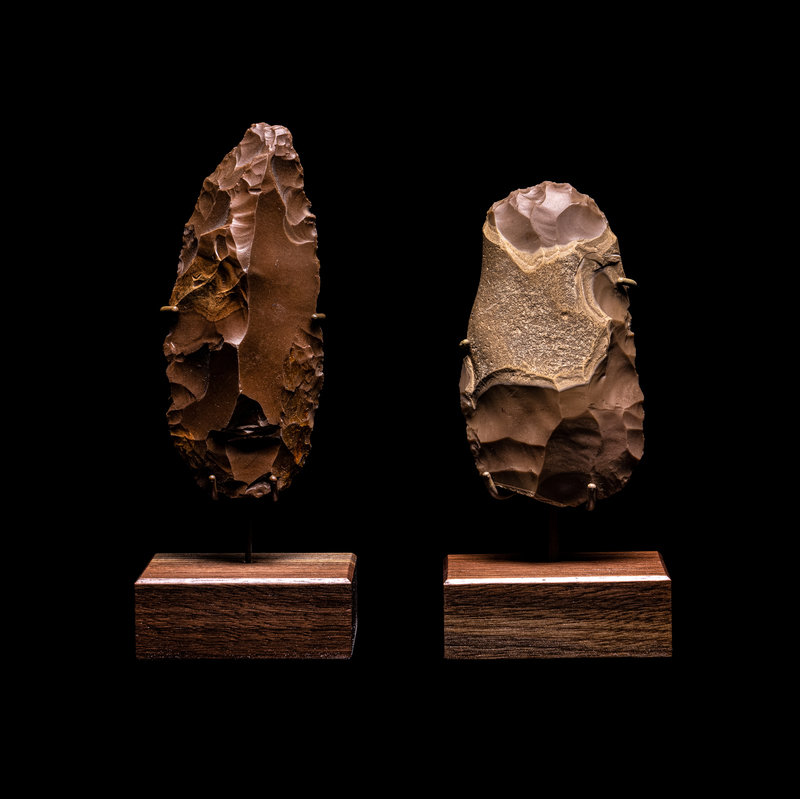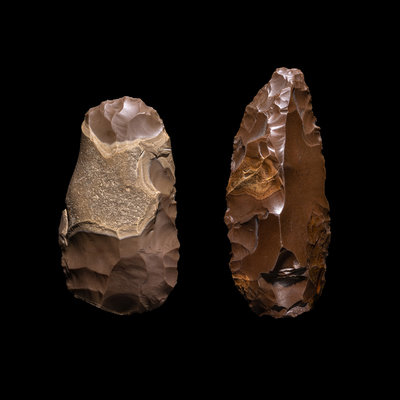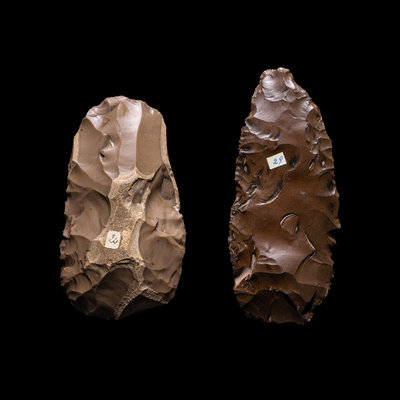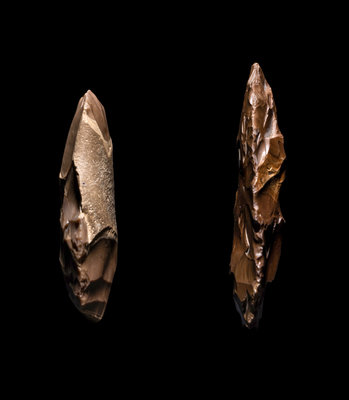Condition Report
Contact Information
Auction Specialist
Lot 59
Two Egyptian Flint Tools
Sale 1188 - Antiquities & Ancient Art
May 25, 2023
10:00AM CT
Live / Chicago
Own a similar item?
Estimate
$800 -
1,200
Price Realized
$3,150
Sold prices are inclusive of Buyer’s Premium
Lot Description
Two Egyptian Flint Tools
Paleolithic Period, Circa 300,000-90,000 B.C.
Length of longest 5 inches (12.7 cm).
